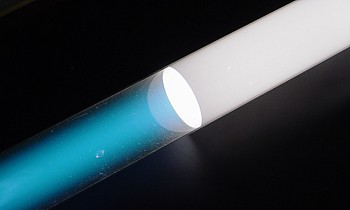Alright guys, I know this is out there but I am just wondering. Of all the ways to create light, which is a small piece of electromagnetism, why can't one simply induce a strong charged electron field in a magnetic field at the correct...speed, pulse, whatever else it would take, to make light, literally create it from those two things.
Am I missing something? I know they are inversely proportional, on a sine wave x and y traveling in the z. But what stops the ability to do that?
On another unrelated topic, I am theorizing non-friction surfaces. Not like teflon, something usable on say, hypersonic vehicles. The idea is, what if you took a polished surface, as smooth as human error allows, then charge the upper layer of atoms to excite the electron fields enough to fill in the gaps causing friction, to create almost a bubble of just a single electron wall. Sure there would be air pressure shock waves at supersonic, but there would be no friction to heat the surface.
Anyone have ideas, feedback, corrections?
Am I missing something? I know they are inversely proportional, on a sine wave x and y traveling in the z. But what stops the ability to do that?
On another unrelated topic, I am theorizing non-friction surfaces. Not like teflon, something usable on say, hypersonic vehicles. The idea is, what if you took a polished surface, as smooth as human error allows, then charge the upper layer of atoms to excite the electron fields enough to fill in the gaps causing friction, to create almost a bubble of just a single electron wall. Sure there would be air pressure shock waves at supersonic, but there would be no friction to heat the surface.
Anyone have ideas, feedback, corrections?






